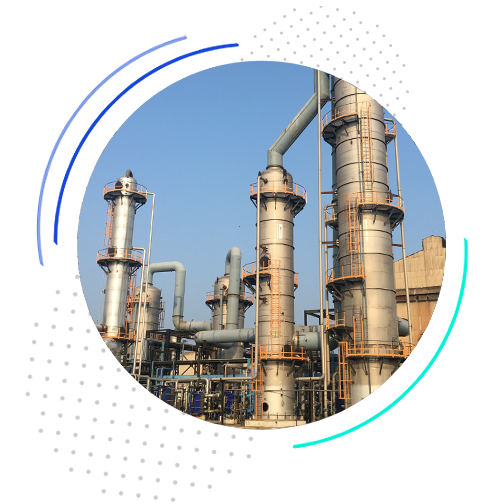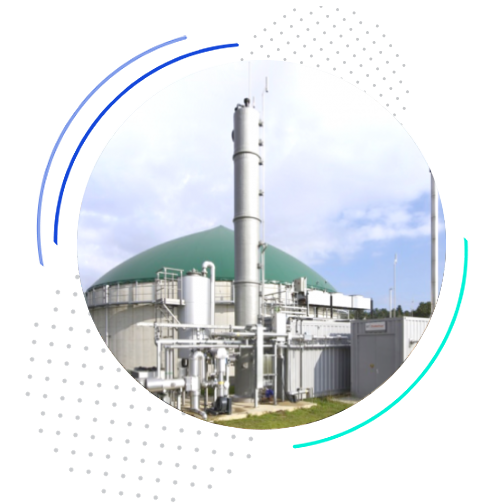Technology Licence
Custom CO2 capture technology solutions at industrial scale
Reduce the cost of capture with our performance chemistry and process efficiency custom-tailored to your facility.
%20(1).jpg)
Custom-tailored technology licence
By opting for our technology licence, our team will create a custom, open-plant design, specially tailored to your site, harnessing the efficiencies of our CDRMax™ process. Our Engineering Services team works with the site owner to thoroughly understand your specific operational conditions and help you efficiently reach your decarbonisation goals.
No matter the size of your CO2 output, your facility can capture it using the CDRMax™ process. A conventional design with CDRMax™ can be scaled to capture CO2 in rates from hundreds to thousands.
The CDRMax™ process captures carbon dioxide (CO2) from the industrial flue gases or off-gases emitted from power plants, boilers, kilns and chemical facilities. CDRMax™ can be used with source gases that contain CO2 concentrations between 3% and 25% by volume. The process produces CO2 with purities ranging from 95% to 99%, which can then be sold, re-used, or sequestered. The CDRMax™ process utilises our CO2 capture technology, proprietary solvent, process equipment, and advanced heat integration to significantly reduce both capital and operating costs.
Due to an extremely low rate of corrosion, smaller equipment, and other improvements, CDRMax™ has been proven to provide a 20% CAPEX reduction compared to other available solutions. Thanks to lower heat and energy demand, CDRMax™ reduces OPEX by 30-40% compared to other available solutions.
- 1Absorption. In the absorber, the solvent extracts CO2 from the feed gas.
- 2Heating. CO2-rich solvent is partially heated in the heat exchanger using hot lean solvent from the desorber.
- 3Separation. CO2-rich solvent is further heated within the desorber, where CO2 molecules are released from the solvent.
- 4Regeneration. CO2-lean solvent passes back through the heat exchanger to the absorber for reuse.
- 5Storage. Once isolated, CO2 can be safely stored or converted into new products for resale in the circular carbon economy.
.webp)
Why use our CDRMax™ process?
Lower costs
With conventional CO2 capture technology, the cost of carbon capture is around $70/tonne. Our open-plant designs have reduced this cost to $40/tonne of CO2 — almost a 50% cost reduction.
Successful track record
Our CO2 capture technology has been well-tested and proven in 44 facilities around the globe.
EPC vendor-neutral
When it comes time to construct your plant design, you can either work with one of our EPC partners or choose your own. We will support whomever you want to get the job done on-site, giving you greater operational flexibility. Our process equipment is well understood by engineering contractors, enabling fast project turnarounds.
Effective for any size
Our technology licence is suitable for mid-to-large capacities. If you want to capture more than 100 tonnes of CO2 per day from your site, a custom open-plant design using our technology licence is necessary.
Success stories

Purpose-built: Technology for industry
In 2016, Tuticorin Alkali Chemical and Fertilizers Ltd. partnered with Carbon Clean to create the world’s first fully commercial carbon capture, storage and utilisation plant. Located near Chennai, it has been achieving over 90% carbon capture rates since it began operation.
Carbon Capture Rate

Proprietary: High-performance solvents
Since 2018, Carbon Clean in collaboration with Arcanum Energy has surpassed 500,000 m3 of biogas processed per day with its APBS-CARBex® solvent in their biogas upgrading facilities in Germany. Compared to the standard amine, Carbon Clean’s technology provides several advantages that allows the plants to operate more efficiently.
Less Thermal Energy
.png)
Breakthrough: Technology for low-cost carbon capture
In 2017, Carbon Clean announced breakthrough test results from the Technology Centre Mongstad (TCM) pilot. Corrosion testing confirmed that with APBS-CDRMax®, it is possible to construct with less expensive materials such as carbon steel rather and a lower grade of stainless steel.
Cost Reduction (up to)
Industries
Our next-gen CO2 capture technology is designed specifically for hard to abate industries, including steel, cement, refinery, waste to energy and biogas.
Cement
With more than 4 billion tonnes of cement produced globally each year, the cement industry generates approximately 8% of all global CO2 emissions. But the process is one of the easiest to facilitate carbon capture.
Learn MoreRefineries
While processing by refineries only contributes around 5 to 10% of the total emissions resulting from oil products, the opportunities for reducing these are significant due to the nature of the processes used. Major players in the industry are already pledging to achieve net zero by 2050.
Learn MoreSteel
The highly complex process of steel-making provides multiple opportunities for carbon capture, including using CCUS on the blast furnace to capture and store the majority of carbon emissions.
Learn MoreEnergy from waste
By utilising CCUS at EfW plants, municipal authorities can decarbonise the entire waste chain, and achieve a huge reduction in the carbon footprint of individuals in cities.
Learn More
Biogas
CO2 and other impurities must be removed from renewable natural gas (RNG) feeds – like biomethane and landfill gas — to meet purity specifications. Our proprietary solvent is a simple drop-in enhancement for current solvents, delivering better performance for CO2 removal.
Learn More
